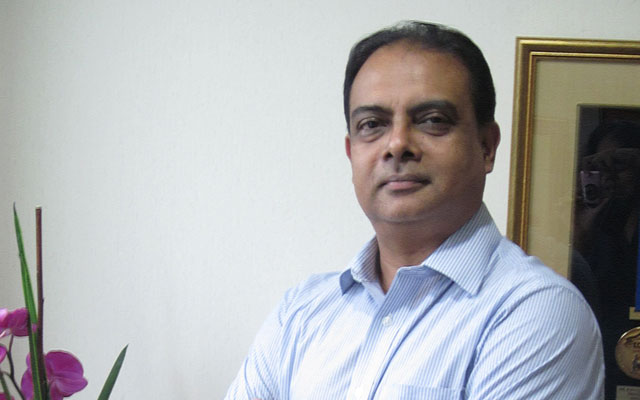Rigorous preparation and understanding how to deliver a unique experience for delegates make all the difference in a bid, says Ravi Chandran, who will welcome the 24th Asian & Oceanic Congress of Obstetrics and Gynaecology (AOCOG) as congress president to Sarawak this June.
Will this be the first AOCOG for Malaysia?
Actually it will be the third time for Malaysia. Kuala Lumpur hosted the sixth AOCOG in 1974 and the 16th AOCOG in 1998.
We are excited because this will be the first time we’re hosting AOCOG outside Kuala Lumpur and one of the very few times AOCOG will be held in a secondary destination.
 Why Sarawak?
Why Sarawak?
Being different was part of our strategy to win this congress. If we had chosen Kuala Lumpur as the venue, we would not have stood out from competing bids.
We chose Kuching because it has a state-of-the-art convention centre with a million-year-old natural rainforest literally at our doorstep, and it is also in Borneo, a name that conjures up images of jungles, headhunters and mystique!
The Obstetrical and Gynaecological Society of Malaysia (OGSM) bid for this congress in 2007 but lost to Taiwan. What were the lessons learnt?
It was an eye-opener. I led the team that went to the AOFOG (Asia & Oceania Federation of Obstetrics and Gynaecology) General Assembly in Tokyo in 2007 to present the bid and went up against Thailand, Hong Kong and Taiwan.
We assumed that, as in the past, if the representative spoke clearly in good English and presented his case well and with logic, the country would win. But that didn’t happen. It was a rude awakening and we learnt from that experience that we had to go in well prepared and with a better strategy.
Did you try again at the General Assembly in Auckland in 2009?
No! A failed bid takes its toll not only on your pocket but also on your ego! We decided to use the 2009 General Assembly as a learning opportunity to understand what the executive council, council members and elected representatives from each member country really wanted a congress to have.
That year, I was also elected to the AOFOG executive board as the honorary treasurer. On hindsight, this was fortuitous as this position gave me better access and insight to the executive and council members’ thought processes, which made it easier to lobby for the 2015 congress.
What did you learn?
Basically, delegates were bored of attending congresses in big cities. So we had to offer something that would be very different and excite the imagination of voters. We were cognizant of the fact that delegates wanted practical scientific content and also a better representation of speakers from across the AOFOG region.
Issues such as dietary requirements were also uppermost in the minds of delegates and we resolved that we would respect the needs of Muslims, Hindus, Buddhists and people of other religious persuasions, as well as cater to vegetarians, vegans and gluten-free diets from a health perspective. We felt that this would not be an insurmountable task for Malaysia as we are already exposed to a multicultural, multiracial and multi-religious environment.
So the next time OGSM bid for the congress was in 2011?
Yes, this time around we went prepared. A lot of thought went into the presentation and it included valuable input from the Sarawak Convention Bureau.
Essentially, the bid document covered the A to Z of what a delegate would want to know about the venue. I believe we won as we stressed the uniqueness of the destination, the venue itself and what we could offer that was different from previous congresses.
Ultimately, you’ll have to deliver an enticing programme in order to attract international delegates.
For the first time in the congress’ history, we’re organising a one-week Community Fellowship Programme which runs a week prior to the main congress.
These Fellows will be young gynaecologists representing each of the 27-member nations of AOFOG and the idea is to have these young gynaecologists experience first-hand how the Malaysian healthcare system has successfully integrated technologies in a rural setting. They will visit Kuching’s public hospital, rural health centres, a longhouse and participate in community activities.
It is hoped this collaboration will spawn new avenues to improve the delivery of quality healthcare to the women of Sarawak. Plans are afoot to record the event on video and present it at the congress, and also to the relevant health authorities.
The scientific content of the main congress will not only have elements of advanced techniques and procedures, but will also encompass the basic issues relevant to developing countries thus reflecting our theme, Old World Charm Meeting New Technology.
Also for the first time, we will have a special symposium from West Asia, with members from the UAE, Jordan, Saudi Arabia and Oman speaking on what Arab women want from obstetricians and gynaecologists.
Key members of the International Federation of Gynaecology and Obstetrics will conduct a special symposium and, not to be outdone, the Royal College of Obstetricians and Gynaecology of UK will run a similar programme during the main congress.
Finally, from the outset, we decided the congress would have a “green” theme with a small carbon footprint. The Borneo Convention Centre Kuching (BCCK) has a host of eco-friendly features ranging from its specific orientation to minimise energy wastage for lighting and cooling, to its very own rainwater harvesting system.
How many delegates are you expecting?
We are targeting 1,500 delegates. If we meet or exceed this number, this will be one of the largest congresses we have ever had. Delegates from 27-member nations of AOFOG will attend this congress and we are also confident of support from delegates from Europe, Africa and North America.
Has Sarawak Convention Bureau helped with delegate boosting?
Yes, Sarawak Convention Bureau has been very proactive and participated in our promotional activities in Taipei, Tokyo, Seoul, Jeddah and Bangkok. The men and women dressed in traditional costumes are always a hit with the delegates, drawing a large crowd, which in turn gives us the opportunity to promote the congress and destination.
In addition, both the Sarawak Convention Bureau and the Malaysia Convention & Exhibition Bureau gave us funds to assist with promotional activities and bring in key international speakers.
Was it difficult attracting speakers?
Not at all, because we identified key topics early and approached the plenary speakers two years ahead of the congress. Usually, getting the speakers you want is difficult if you don’t give them enough lead time. But that has not been the case for us. The real challenge for this congress was to ensure an equitable distribution of speakers across the AOFOG region so that no one feels left out.
Has it been hard to get sponsors?
We are doing all right in terms of sponsorship because we started working on it two years ago. To attract sponsors, you’ve got to entice delegates to attend, for which you must have an interesting programme. Also, sponsors will want to see the attendance at previous congresses. For the last three AOCOGs, we have had an attendance of more than 1,000 delegates.
How will OGSM members benefit from having the congress in Malaysia?
Having it in Malaysia means that our members do not need to spend a lot on travel. They have an opportunity to attend an international congress and listen to lectures by leading authorities in the profession, all at reduced rates. It also affords them a platform to present scientific papers at the congress and if their presentations are accepted, it will be published in the Journal of Obstetrics and Gynaecology Research, an international indexed medical journal. Finally, it gives our members a chance to network, exchange ideas and have personal discussions with like-minded delegates from around the world.
Revenue generation is secondary but still important. The profits generated will be ploughed back to funding activities for our members.
How will the local communities in Sarawak benefit from this conference?
We are working closely with BCCK on this. Extra food will be donated to soup kitchens in Kuching, and we have ordered customised delegate bags from the Sarawak Association for the Welfare of Intellectually Disabled Children. These specially commissioned bags will be made from recyclable materials and bark from sustainable forests. Also, as part of our CSR programme, proceeds from the charity gala dinner will be channelled to select women’s aid organisations.
Lastly, what would you say is the biggest challenge to the well-being of associations?
The recruitment of young members. I joined OGSM in the 80s, and the question that young members asked then was: “What can I do for the society?” Now the question is: “What can the society do for me?” Societies must adapt to the needs of its younger members to remain relevant, otherwise they will just die off.
In recent years, OGSM has initiated specific activities to cater to trainee specialists including training sessions, lectures and workshops aimed at enhancing young members’ skills and improving their success rates at postgratuade examinations. We consciously involve young specialists in the council and committees to give them a sense of participation and purpose. During the planning and organising of this congress for instance, we have young specialists on board as this is also part of our succession planning.
THE GOOD DOCTOR
-
Ravi Chandran, congress president of the 24th Asian & Oceanic Congress of Obstetrics and Gynaecology
-
Consultant obstetrician and gynaecologist at Gleneagles Hospital Kuala LumpurVice president of AOFOG
-
He has published more than 50 peer reviewed articles and was frequently invited to speak at local and international meetings during his 10-year tenure as lecturer and associate professor in the department of obstetrics & gynaecology at the National University of Malaysia
-
He was awarded the Fellowship of the Royal College of Physicians of Ireland in 1998, and elevated to Fellow of the Royal College of Obstetricians and Gynaecologists UK in 2001
-
Past president of OGSM in 2005/ 2006
-
Past president of Malaysian Ultrasound Society from 1997 to 2004. During his term, he was instrumental in successfully bidding for the biannual Congress of the Asian
-
Federation of Ultrasound held in Kuala Lumpur in 2001.













